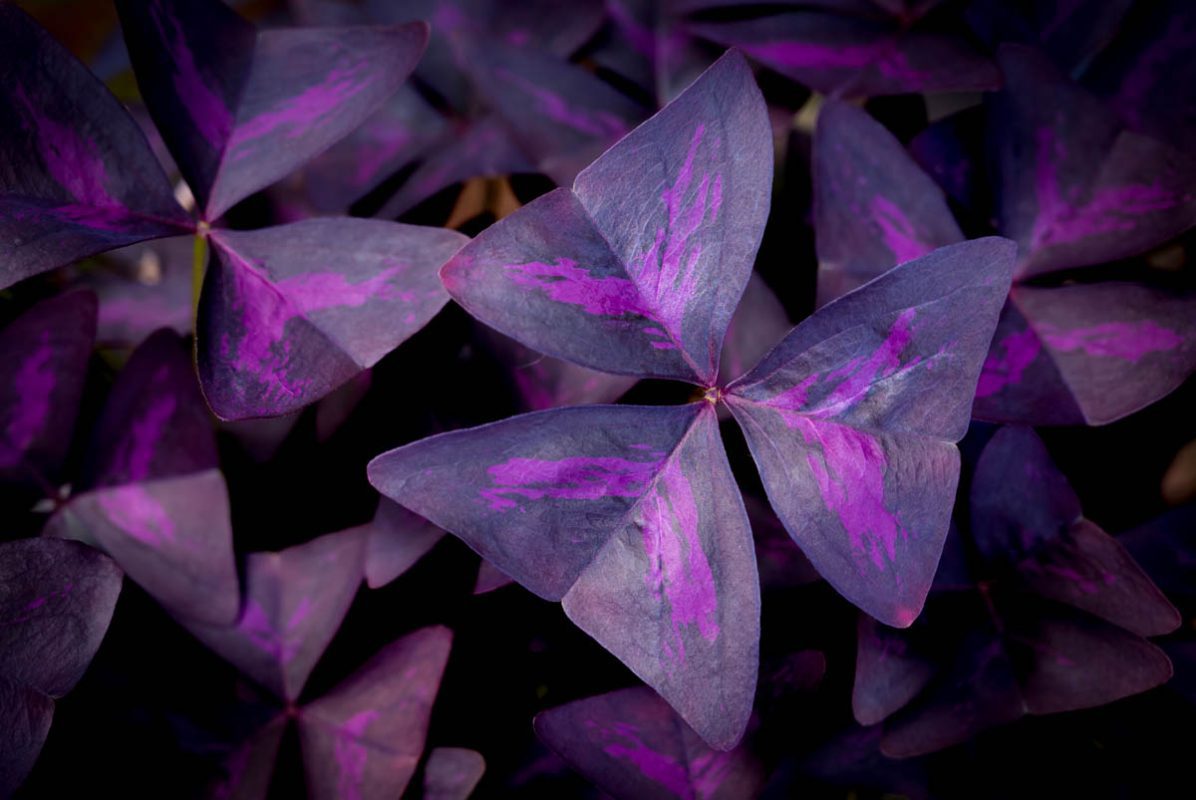Purple oxalis (Oxalis triangularis) is toxic, the toxic principle is oxalic acid that binds to circulating calcium, leading to hypocalcemia and deposition of calcium oxalate in the renal tubes which can cause acute renal failure. Poisoning in humans and household pets is unlikely as a large volume must be consumed to cause toxicity.
What is purple oxalis?
| Family | Oxalidaceae |
| Botanical name | Oxalis triangularis |
| Common names | Shamrock plant, Wood sorrel, False shamrock, Wood plant, Good luck plant, Sorrel, Love plant, Purple shamrock, Sourgrass |
| Leaf colour | Varies |
| Flower colour | White and pink |
| Toxicity | Toxic to humans, dogs, cats and livestock |
| Toxic properties | Oxalic acid |
Purple oxalis is a member of the oxalis family comprised of 800 species of rhizomatous herbaceous ornamentals. Many species of oxalis have become noxious weeds, however, a small number of oxalis plants are cultivated for their unique leaves. Purple oxalis is a rare species of oxalis native to Brazil, Bolivia, Paraguay and Argentina.
This unique plant is grown as a houseplant for its interesting deep purple, butterfly wing-shaped leaves with a lighter purple in the centre of the leaf. The leaves close themselves up at night and re-open in the morning. Trumpet-shaped white to pale pink flowers are produced in late spring.
Related: Is shamrock plant toxic to dogs?
Toxicity
Purple oxalis is labelled as toxic due to oxalic acid that is rapidly absorbed in the gastrointestinal tract. It binds to circulating calcium which can cause hypocalcemia (low blood calcium levels), as well as acute kidney failure if CaOx crystals are deposited in the renal tubules.
Fortunately, toxicity in people, dogs and cats is extremely unlikely due to the bitter taste of purple oxalis and the low volume of plant consumed. Livestock is at the greatest risk as they can potentially consume a large amount of purple oxalis.
Horses who have ingested large volumes of purple oxalis have developed colic, other symptoms include gastrointestinal upset as well as symptoms associated with hypocalcemia and acute renal failure, however, these are unlikely in humans, cats or dogs.
Uses
Despite its toxic reputation, purple oxalis leaves can be used to decorate salads and the delicate flowers make a beautiful cake decoration. Consumption is safe as long as large volumes aren’t eaten as they can cause mild GI upset. Purple oxalis leaves are said to have a bitter/citrus taste.
Care
Purple oxalis is an easy to care for plant and suitable for the novice plant enthusiast. Their preferred location is in bright/indirect light, with well-draining soil, and moderate to high water needs, allowing the surface to dry out between waterings. If the right conditions are not met, the plant may lose its leaves and go into dormancy which may lead plant growers to believe the plant has died. Energy is stored in the underground tubers new growth will typically form in the spring.
Purple oxalis multiply by growing corms beneath the soil. Each corm can grow into a new plant and can easily be divided. Carefully remove the plant from its pot, and carefully tease away the individual corms, plant in separate containers.
Is purple oxalis safe to keep in homes with pets?
Generally, yes, purple oxalis is safe to grow in homes with pets. Cats or dogs generally won’t consume enough of the plant to cause issues. Do not feed to pocket pets and avoid growing in large quantities outside where livestock can access it.
Julia is a writer and landscape consultant from Wollongong with a love of horticulture. She had been an avid gardener for over 30 years, collects rare variegated plants and is a home orchardist. Julia is passionate about learning and sharing her knowledge of plant propagation and plant toxicology. Whether it’s giving advice on landscape projects or sharing tips on growing, Julia enjoys helping people make their gardens flourish.




